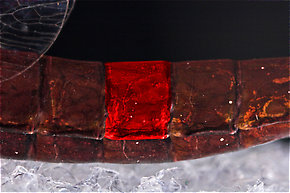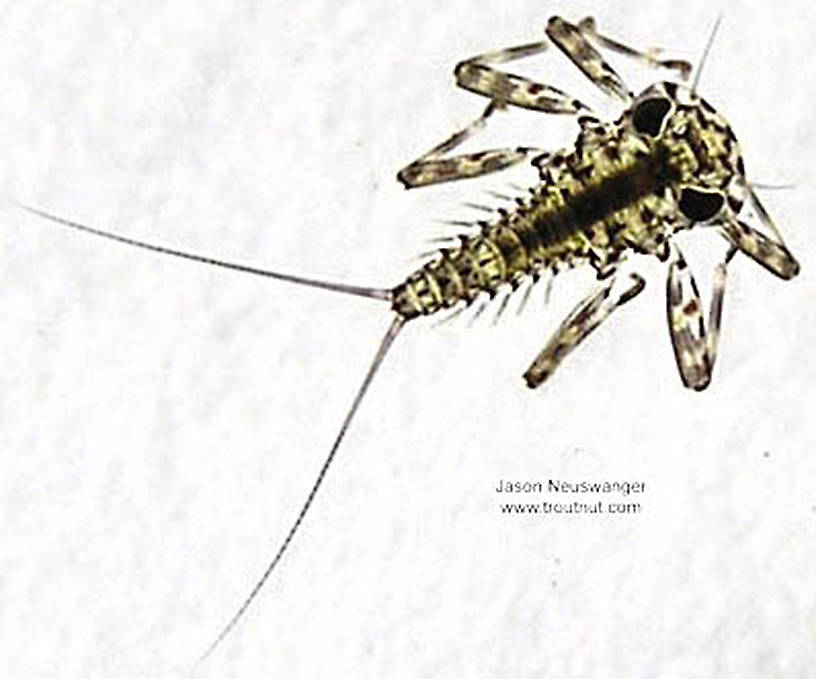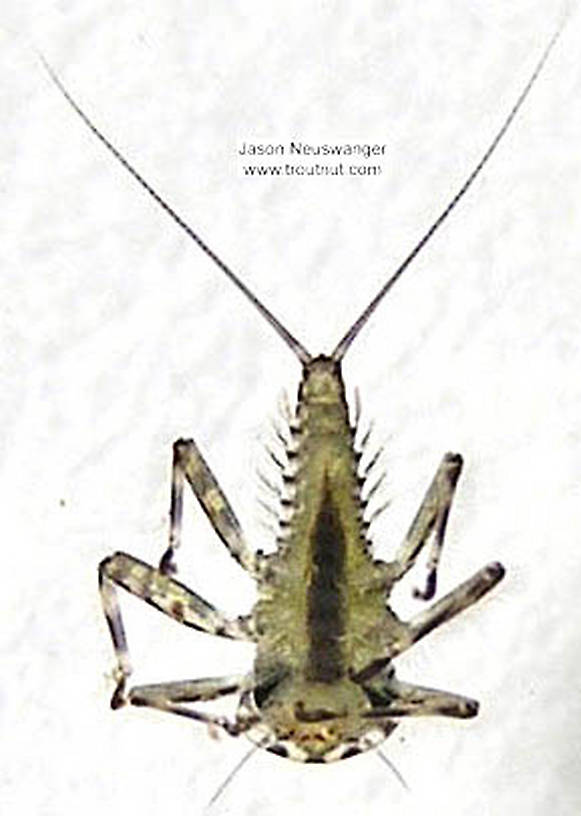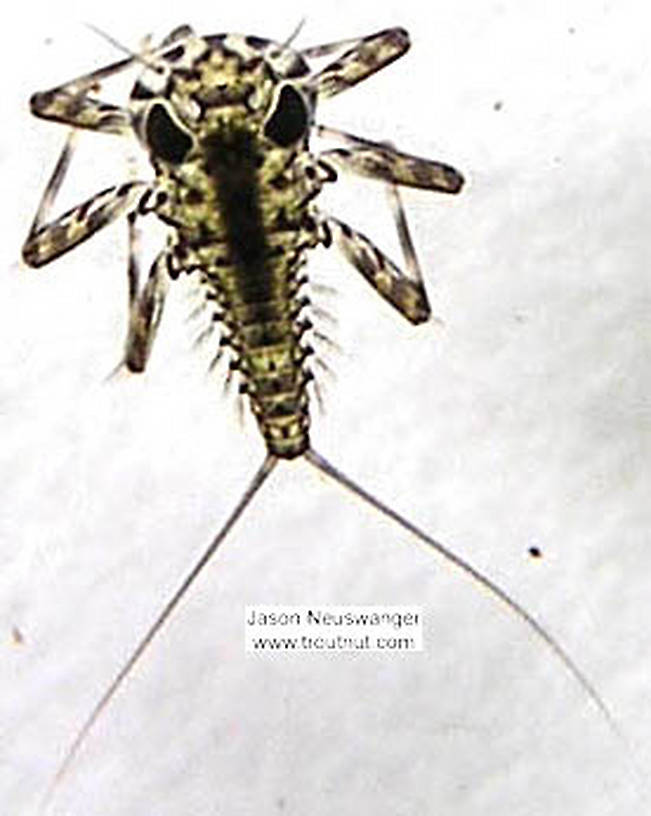Blog & Latest Updates
Fly Fishing Articles
Insects by Common Name


Epeorus vitreus (Sulphur) Mayfly Nymph Pictures
Classification
Kingdom
Animalia (Animals)
» Phylum
Arthropoda (Arthropods)
» Class
Insecta (Insects)
» Order
Ephemeroptera (Mayflies)
» Genus
Epeorus (Little Maryatts)
» Species
vitreus (Sulphur)
I suspect this is an Epeorus vitreus nymph. At the current instar (Instar: Many invertebrates molt through dozens of progressively larger and better-developed stages as they grow. Each of these stages is known as an instar. Hard-bodied nymphs typically molt through more instars than soft-bodied larvae.), it's tough to make out the pair of dots on the tergites (

One tergite of this Isonychia bicolor mayfly spinner is highlighted in red.
This mayfly was collected from the Namekagon River on January 13th, 2004 and added to Troutnut.com on January 25th, 2006.
Start a Discussion of this Nymph:
Top 10 Fly Hatches
Top Gift Shop Designs
Eat mayflies.
Top Insect Specimens
Miscellaneous Sites
Troutnut.com is copyright © 2004-2024 Jason
Neuswanger (email Jason). See my FAQ for information about use of my images.
 privacy policy
privacy policy



